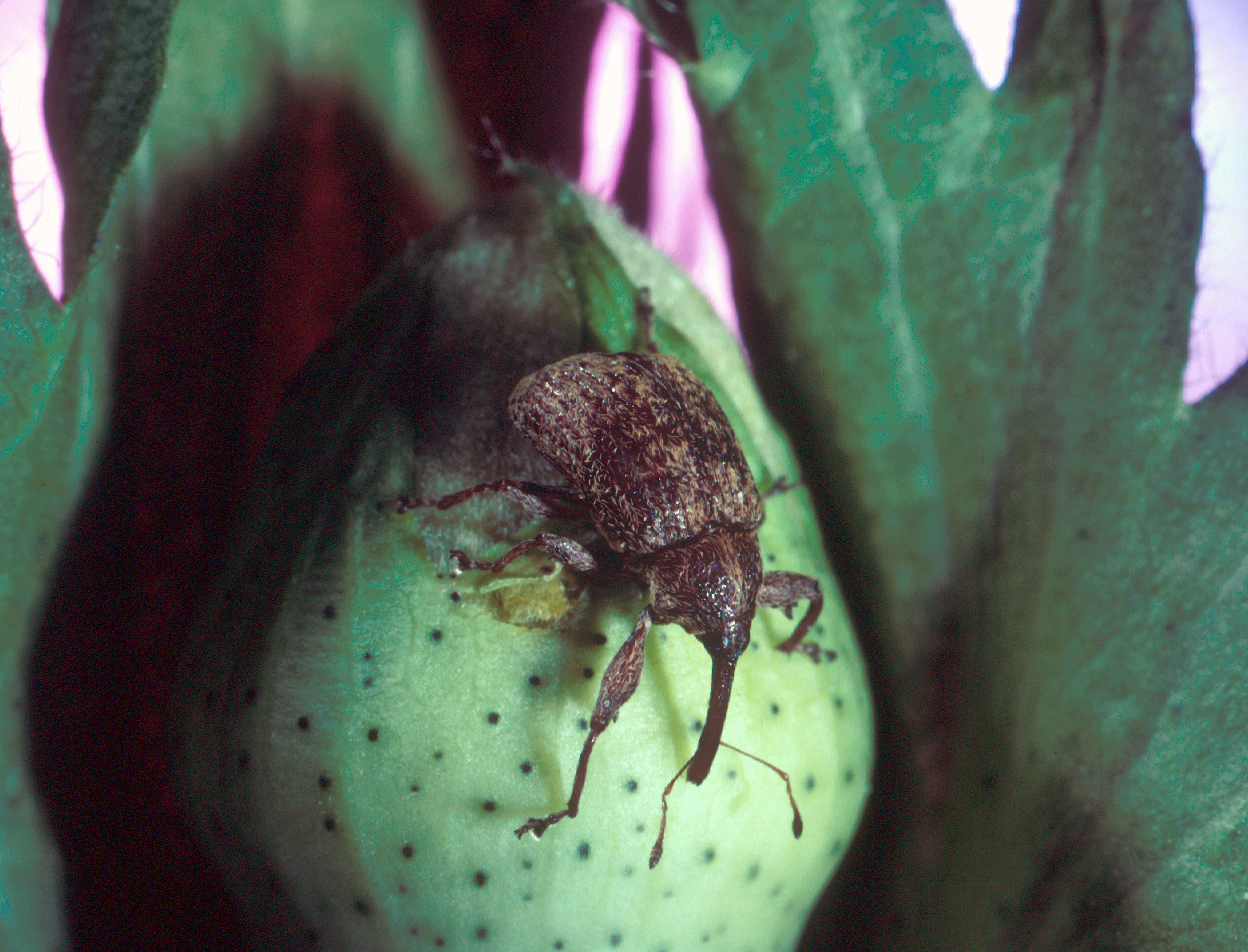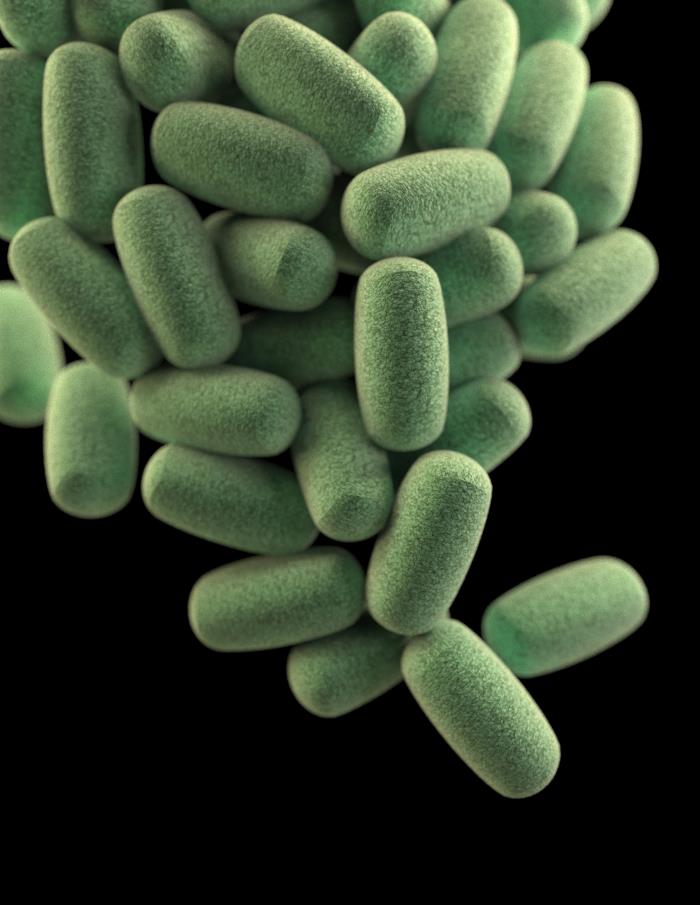Beetles exploit bacteria labor to grow their exoskeletons
New research has revealed a "symbiotic organ" in weevils, showing how tiny organisms shape larger life
Lewis Wickes via Flickr
Bacteria are tiny, but powerful, protein factories, and key players in human industry thanks to microbial engineering. Enzymes, the proteins that carry out chemical reactions, can be made by trillions of bacteria en masse, and then extracted and purified to be applied to various human-centric endeavors.
Bacteria make the enzymes used to treat industrial products from bread flour to paper, often improving product stability and replacing the use of harsh chemicals. They are the source of lactases applied to conventional milk that allow development of lactose-free versions of our favorite dairy foods. Bacterial enzymes have long been used as additives to livestock feed to help break down indigestible components and to release key nutrients. Bacteria can even be engineered to make human proteins like insulin for the treatment of Type I diabetes. A major component of laundry detergent is powdered amylases and proteases from bacteria which go to work breaking down the fats and proteins we spill on our clothes.
Now, there is evidence that some insects also capitalize on bacterial labor, acting as extreme microbial engineers of the bacteria inside them.
New research by Takema Fukatsu and his group at the National Institute of Advanced Industrial Science and Technology (AIST) in Japan has shown that beetles grow their exoskeleton by deputizing symbiotic bacteria in their guts to make the required proteins for them.
By carefully dissecting weevils – a particularly diverse and abundant type of beetle – Fukatsu and colleagues found what they call a “symbiotic organ” or “bacteriome”. Inside the weevil gut, the bacteriome is made up of weevil cells that become specialized (like how human cells can be specialized to be a skin cell, a neuron, or a blood cell) to be inhabited by a very interesting bacteria that grows inside them. What makes these bacteria interesting is their DNA; they have only 5 percent of the number of genes most bacteria have.

Capitalist overlord
But these special bacteria, named Nardonella – a former student's homage to early weevil researcher Paul Nardon – must be doing something right. While Nardonella can no longer live outside of its host, weevils that were cured of Nardonella also rarely survived, dying with soft exoskeletons that lacked pigment. Looking closely at the Nardonella genome, the scientists discovered that nearly all genes for common bacterial metabolic pathways are missing, with the notable exception of those for used to make tyrosine. In the insect world, tyrosine is the key building block for the structural proteins and the dark pigment molecules in the exoskeleton.
It takes many steps to make tyrosine, and each step carried out by a different enzyme. While the Nardonella genome encodes the enzymes for the early steps, the pathway at first appeared incomplete – lacking the enzyme for the final step. The solution to this apparent mystery is that the weevil itself supplies the required enzyme, meaning that producing tyrosine is a group effort between Nardonella and weevil.
The researchers painstakingly dissected weevils, isolated their bacteriomes, and determined that there is a gene in the specialized weevil cells that can complete the tyrosine pathway, and that it is being highly expressed exclusively in those cells. Without expression of that gene, the weevil could no longer survive into adulthood, just as it could not survive without Nardonella to do the early steps of the pathway.
Like all other insects, weevils build their hard exoskeletons only at a specific time in their development, which means the amount of tyrosine they need changes over time. Nardonella doesn't have the ability to regulate this pathway - meaning the early part of the pathway is 'on' all the time - but by controlling the final step in the pathway, the weevil exerts control of how much tyrosine is ultimately produced. Like having a hand on the faucet, the weevil essentially turns production up or down to suit its needs.
These experiments point to an intimate association between bacteria and insect. Living inside the weevil cells allows Nardonella to scavenge many of its metabolites instead of making them itself (explaining its small genome size), and in return almost its entire remaining gene repertoire is devoted to the tyrosine pathway, which the weevil makes use of when it is time to build its cuticle. The relationship is passed on during female weevil development when the bacteria become concentrated in the developing eggs, and each newborn weevil develops a bacteriome full of the Nardonella from its mother.
The weevil and Nardonella began this relationship 100 million years ago, explaining why so many diverse weevils species were found to harbor the bacteria. But in some cases, Fukatsu and colleagues found weevils with a different bacterial counterpart, and sometimes without any bacteria at all. It may be that some weevil diets provide enough tyrosine so that they don’t need to retain a bacterial tyrosine-factory. Similarly, Nardonella’s position as tyrosine-producer is a vulnerable one: other bacteria could sneak in to fill that specific role.
There are many examples from other insects where bacterial endosymbionts manipulate their hosts’ reproductive systems to ensure their survival, but Nardonella seems to passively accept its obsolescence in some species of weevil. As a microbiologist, I feel sorry for the hyper-domesticated Nardonella: becoming an endosymbiont led it down a one-way path with a dead end.

Bacteria of the world, please do not unite
For perspective, vertebrates also have very close associations with bacteria (the human microbiome participates in the likes of digestion, drug activation, and immunity). But until recently the only examples of bacteria living inside vertebrate cells have been of pathogens that exploit cellular resources to the direct detriment of the cell. The scarcity of examples highlights the evolutionary pressure on hosts against taking on an intracellular companion: protective immune pathways must be weakened or circumvented to allow stable partnerships between host and bacteria.
We don't know how the relationship between Nardonella and the weevil began, but each has been shaped by their long-term association with the other. Natural selection has acted on Nardonella's genome to streamline it for tyrosine production, and on the weevil to promote the specialization of a new cell type able to harbor a bacterium and to regulate its beneficial activities. Combined, this "symbiotic organ" is an incredible example of productive microbial engineering on an intimate scale. Rather than having parallel evolutionary trajectories, rapidly evolving and versatile bacteria can actively influence the evolutionary fate of complex organisms.
Peer Commentary
Feedback and follow-up from other members of our community
Cassie Freund
Ecology
Wake Forest University
I'm interested in the weevils that have different or no bacteria. Are there differences in cuticle composition between weevils with and without Nardonella, then? Are the bacteria in non-Nardonella weevils related to the Nardonella bacteria? It's interesting that some weevils might produce enough tyrosine to put the bacteria out of business, mainly because I would predict that those bacteria would find another way to earn their living, so to speak. But it seems like they haven't quite evolved those capabilities yet.
My take on it is that the advantage that Nardonella (accidentally) provided was tyrosine when the weevil first expanded to an environment where its diet was tyrosine-poor. A hundred million years of growth in those environments continued to select for tyrosine production, resulting in an extremely specialized genome. At any point, new expansion of the weevil into an area with a tyrosine-rich food source could instantly remove the need to keep Nardonella around.
Similarly, transient infection/colonization of the weevil by any other bacteria that produces tyrosine could lead to loss of Nardonella in that lineage. Whether the transition from Nardonella-derived tyrosine to diet-derived tyrosine also caused a qualitative change in the cuticle is a great question that is not addressed here. My guess is that any differences would be diminished over evolutionary time.
As for why Nardonella couldn’t stick around when tyrosine comes from a different source, I think the authors are suggesting that it was simply too (evolutionarily) late for them. Nardonella’s extreme gene loss puts it in a very precarious position, because it has lost so many physiological capabilities; it can’t make many metabolites for itself, let alone any that the weevil might find useful.
Michael Graw
Oceanography
Oregon State University
This was really interesting, especially in light of the expanding number of bacteria currently being discovered in the ocean floor and soils that have extremely minimal genomes. It's generally been assumed that these bacteria live a parasitic lifestyle, but the finding of Nardenella's symbiosis suggests that they could actually be living mutualistically, and further, streamlined for a very specific purpose within that mutualism.
Ashley Best
Microbiology, Immunology
University of Louisville
We've always known that bacteria can live as endosymbionts. The most well-known example is that of what are now mitochondria and chloroplasts. These were once bacterial endosymbionts that at this point have completely lost their identity – only some DNA remains. It's great for science to have examples of these endosymbionts that may be heading down the same pathway. At some point in the next millions of years, maybe all that will be left of Nardonella will be a specialized tyrosine producing organelle and some ancient DNA.